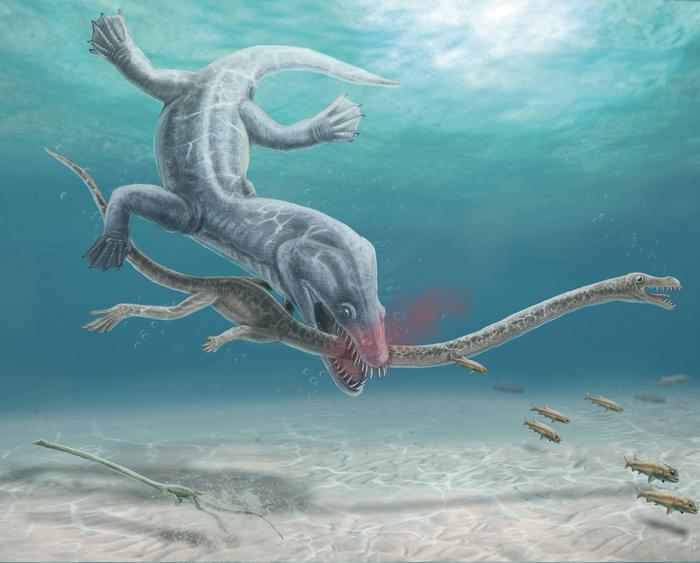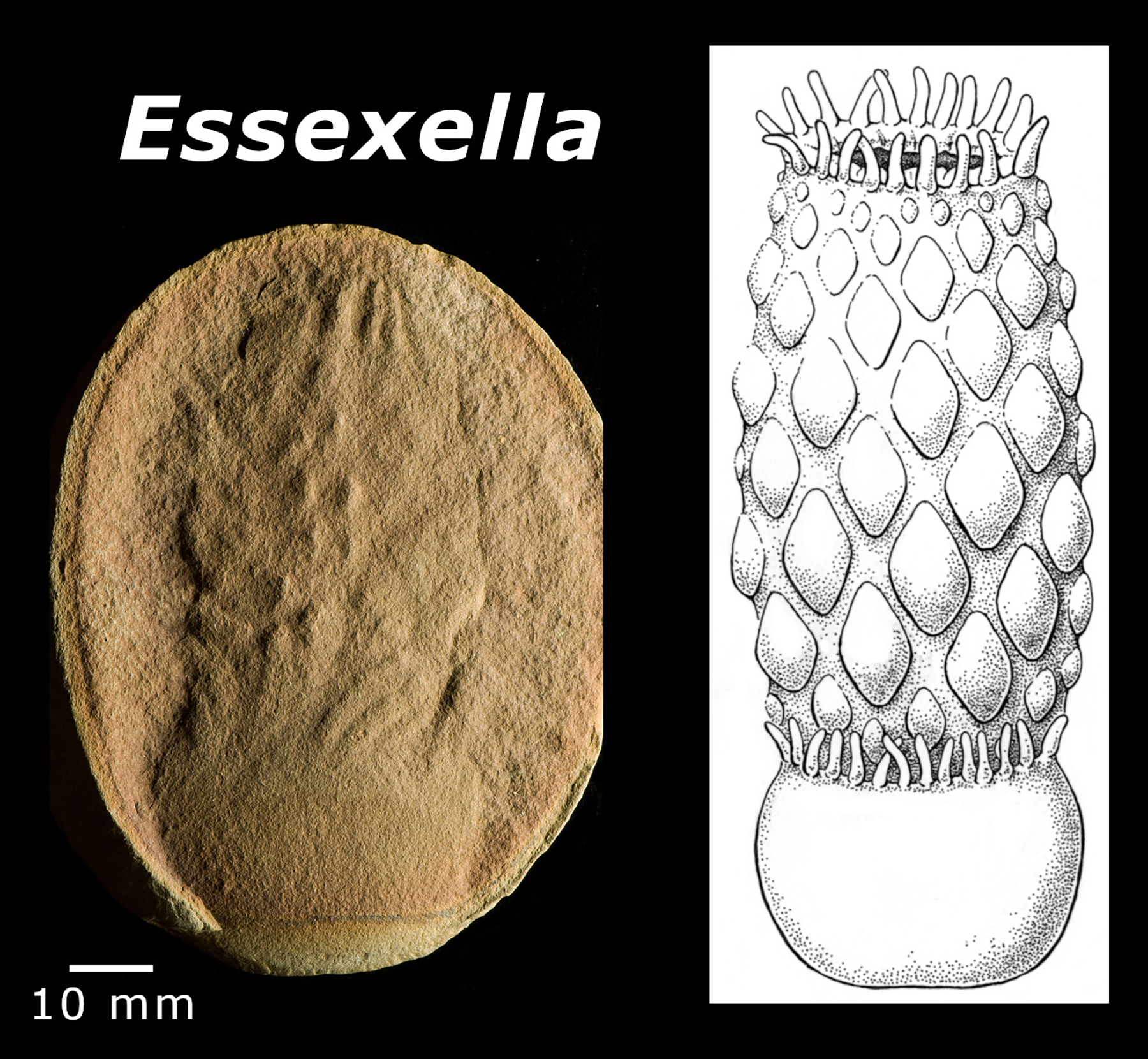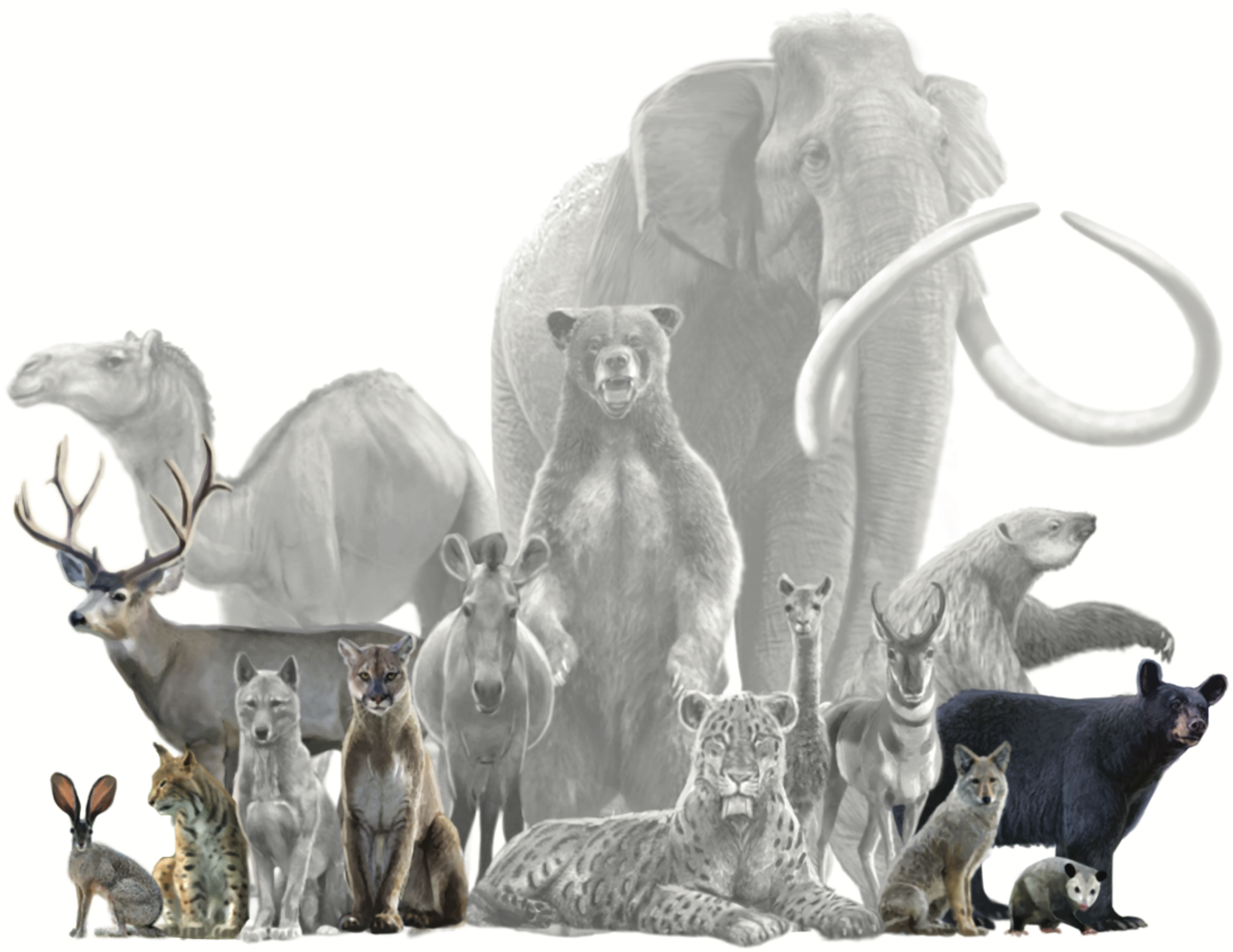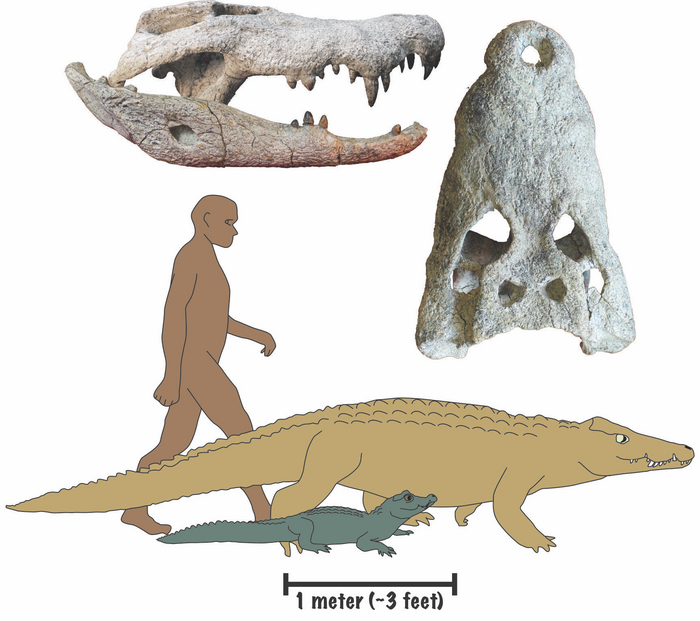When the skeletal remains of a giant ground sloth were first unearthed in 1796, the discovery marked one of the earliest paleontological finds in American history.
Tag: PALEONTOLOGY
Why two prehistoric sharks found in Ohio got new names
Until recently, Orthacanthus gracilis could have been considered the “John Smith” of prehistoric shark names, given how common it was. Three different species of sharks from the late Paleozoic Era – about 310 million years ago – were mistakenly given that same name, causing lots of grief to paleontologists who studied and wrote about the sharks through the years and had trouble keeping them apart.
New fossil site of worldwide importance uncovered in southern France
Nearly 400 exceptionally well-preserved fossils dating back 470 million years have been discovered in the south of France by two amateur paleontologists.
450-million-year-old organism finds new life in Softbotics
Researchers used fossil evidence to engineer a soft robotic replica of an extinct marine organism to understand how locomotion has changed in animals over time.
Advances in soft robotics usher in a new era of scientific analysis
Could robots, whose forms can be adapted to achieve almost any real-world task, soon be able to lend a hand in understanding the paleoecology tracing of extinct organisms?
450-million-year-old organism finds new life in Softbotics
Researchers in the Department of Mechanical Engineering at Carnegie Mellon University, in collaboration with paleontologists from Spain and Poland, used fossil evidence to engineer a soft robotic replica of pleurocystitid, a marine organism that existed nearly 450 million years ago and is believed to be one of the first echinoderms capable of movement using a muscular stem.
Extraordinary fossil find reveals details about the weight and diet of extinct saber-toothed marsupial
Recent paleontological explorations in the Tatacoa Desert in Colombia led to the recovery of the most complete skeleton of a “saber-toothed marsupial” discovered in northern South America.
Dinosaur feathers contain traces of ancient proteins, study finds
Powerful X-rays generated at SLAC National Accelerator Laboratory help researchers shed new light on feather evolution.
Dinosaur feathers reveal traces of ancient proteins
Palaeontologists at University College Cork (UCC) in Ireland have discovered X-ray evidence of proteins in fossil feathers that sheds new light on feather evolution.
Prehistoric fish fills 100 million year gap in evolution of the skull
A 455-million-year-old fossil fish provides a new perspective on how vertebrates evolved to protect their brains, a study has found.
Genomes of enigmatic tusk shells provide new insights into early Molluscan evolution
Accurate phylogenetic trees are fundamental to evolutionary and comparative biology, but the almost simultaneous emergence of major animal phyla and diverse body plans during the Cambrian Explosion poses major challenges to reconstructing deep metazoan phylogenetic relationships.
Miocene period fossil forest of Wataria found in Japan
An exquisitely preserved fossil forest from Japan provides missing links and helps reconstruct a whole Eurasia plant from the late Miocene epoch.

These long-necked reptiles were decapitated by their predators, fossil evidence confirms
In the age of dinosaurs, many marine reptiles had extremely long necks compared to reptiles today.
First side-necked turtle ever discovered in UK
The first side-necked turtle ever to be found in the UK has been discovered by an amateur fossil collector and palaeontologists at the University of Portsmouth.
Fossil Tells the “Tail” of an Ancient Beast
Approximately 200 million years ago, Antarctica was attached to South America, Africa, India, and Australia in a single “supercontinent” called Gondwana. Paleontologists have long wondered about the unique mammals that lived only on this ancient supercontinent, including a particularly elusive group…
New details of Tully monster revealed
For more than half a century, the Tully monster (Tullimonstrum gregarium), an enigmatic animal that lived about 300 million years ago, has confounded paleontologists, with its strange anatomy making it difficult to classify.
Starting small and simple – key to success for evolution of mammals
The ancestors of modern mammals managed to evolve into one of the most successful animal lineages – the key was to start out small and simple, a new study reveals.
Discovery of oldest known fossil gnat shows how insects adapted to a postapocalyptic world
A new fossil discovery dating from ‘just’ a few million years after the greatest mass extinction provides the earliest evidence of the insect group that includes mosquitoes and flies

Paleontologists flip the script on anemone fossils
In a newly published paper in the journal Papers in Palaeontology, University of Illinois Chicago’s Roy Plotnick and colleagues report that fossils long-interpreted as jellyfish were anemones. To do so, they simply turned the ancient animals upside down.
Rare fossilized feathers reveal secrets of paleontology hotspot during Cretaceous period
The site of Jehol Biota in China is famous for stunning fossils which preserve soft tissue – skin, organs, feathers, and fur.
New biography of famous palaeontologist Mary Anning unearthed from University of Bristol archives
A short biography of pioneering scientist Mary Anning, written in the final ten years of her life, has been made public for the very first time.
Fossil CSI: Analysis of giant extinct marine reptile graveyard suggests mysterious site was ancient birthing grounds
Marine giants make migrations across the ocean to give birth where predators are scarce, congregating annually along the same stretches of coastline. A study suggests that 200 million years before whales evolved, school bus-sized marine reptiles called ichthyosaurs may have made similar migrations.
Magma and ice
Let’s pretend it’s the Late Cretaceous, roughly 66 to 100 million years ago.

Study Reveals How Prehistoric Humans Simplified the World’s Food Webs
Research conducted with the help of a University at Albany anthropologist has revealed the cascading effects that humans have had on mammal declines and their food webs over the last 130,000 years, a new study in the journal Science shows.
New discovery of panda species which may have been Europe’s last
Lumbering through the forested wetlands of Bulgaria around six million years ago, a new species of panda has been uncovered by scientists who state it is currently the last known and “most evolved” European giant panda.
Study refutes claim that T. rex was three separate species
Paleontologists find insufficient evidence that iconic Tyrannosaurus rex should be reclassified
Cold Temperatures Paved the Way for T. Rex
About 201 million years ago, volcanic eruptions covered an area roughly the size of South America in lava as Pangaea started to split. The Earth was changed. In the years that followed, 40% of all four-legged land animals were wiped out in the End Triassic Extinction (ETE). The exact cause was unknown. However, researchers recently discovered that atmospheric changes as a result of the eruptions caused freezing temperatures at high latitudes. The land animals that survived had feathers or hair as insulation: large dinosaurs.
500-million-year-old fossilized brains of stanleycaris prompt a rethink of the evolution of insects and spiders
ROM (Royal Ontario Museum) revealed new research based on a cache of fossils that contains the brain and nervous system of a half-billion-year-old marine predator from the Burgess Shale called Stanleycaris
A new giant dinosaur gives insight into why many prehistoric meat-eaters had such tiny arms
An international team that includes a University of Minnesota Twin Cities researcher has discovered a new big, meat-eating dinosaur, dubbed Meraxes gigas, that provides clues about the evolution and anatomy of predatory dinosaurs such as the Carcharodontosaurus and Tyrannosaurus rex.

Researchers Discover Crocodile Species That Likely Preyed on Human Ancestors
Millions of years ago, giant dwarf crocodiles roamed a part of Africa with a taste for our human ancestors.
Hot-blooded T. rex and cold-blooded Stegosaurus: chemical clues reveal dinosaur metabolisms
For decades, paleontologists have debated whether dinosaurs were warm-blooded, like modern mammals and birds, or cold-blooded, like modern reptiles.
Paleontologists have discovered the jaws of a rare bear in Taurida Cave
A group of paleontologists, included researchers from the Ural Federal University (UrFU), discovered the jaws of an Etruscan bear from the early Pleistocene period (2–1.5 million years ago) in the Taurida cave.
What the new Jurassic Park movie gets wrong: Aerodynamic analysis causes a rethink of the biggest pterosaur
One of the most exciting moments of the new Jurassic Park sequel, Jurassic World Dominion, is when the Quetzalcoatlus swoops down from the sky and attacks the heroes’ aircraft.

What Caused This Megatooth Shark’s Massive Toothache?
Did the world’s largest prehistoric shark need an orthodontist, or did it just have a bad lunch?
What Big Teeth You Have: Tooth Root Surface Area Can Determine Primate Size
Researchers have developed formulas that can calculate the body size of a primate based on the root size of its teeth. The formulas could allow researchers to make use of partial and incomplete fossils in order to learn how ancient primates – including human ancestors – interacted with their environment.
‘Raptor-like’ dinosaur discovered in Australian mine, actually uncovered as a timid vegetarian
Fossil footprints found in an Australian coal mine around 50 years ago have long been thought to be that of a large ‘raptor-like’ predatory dinosaur, but scientists have in fact discovered they were instead left by a timid long-necked herbivore.
University of Washington researchers discover four dinosaurs in Montana
A team of paleontologists from the University of Washington excavated four dinosaurs in northeastern Montana this summer. The four dinosaur fossils are: the ilium of an ostrich-sized theropod; the hips and legs of a duck-billed dinosaur; a pelvis and limbs from another theropod; and a Triceratops specimen.
A new species of otter discovered in Germany
Researchers from the Universities of Tübingen and Zaragoza have discovered a previously unknown species of otter from 11.4-million-year-old strata at the Hammerschmiede fossil site.
The giant jurassic dinosaur Allosaurus was a scavenger, not a predator
In a paper published August 23, authors Cameron Pahl and Luis Ruedas, of Portland State University, show that Allosaurus, a large carnivorous dinosaur from the Jurassic that has long been thought to be a top predator, could probably have acquired most of its calories by scavenging on the carcasses of enormous sauropod herbivores that lived alongside it.
T. rex’s jaw had sensors to make it an even more fearsome predator, new digital study finds
Tyrannosaurus rex was not just a huge beast with a big bite, it had nerve sensors in the very tips of its jaw enabling it to better detect – and eat – its prey, a new study published in the peer-reviewed journal Historical Biology today finds.
New prehistoric ‘Hobbit’ creature is among three discoveries suggesting rapid evolution of mammals after dinosaur extinction
Research published today in the peer-reviewed Journal of Systematic Palaeontology describes the discovery of three new species of ancient creatures from the dawn of modern mammals, and hints at rapid evolution immediately after the mass extinction of the dinosaurs.
Palaeontology: Newly-hatched pterosaurs may have been able to fly
Newly-hatched pterosaurs may have been able to fly but their flying abilities may have been different from adult pterosaurs, according to a study published in Scientific Reports . Pterosaurs were a group of flying reptiles that lived during the Triassic,…
A foot tumor and two tail fractures complicated the life of this hadrosaur
When it was discovered in the 1980s in Argentina, this hadrosaur was diagnosed with a fractured foot. However, a new analysis now shows that this ornithopod commonly known as the duck-billed dinosaur actually had a tumour some 70 million years…
Fossil rodent teeth add North American twist to Caribbean mammals’ origin story
GAINESVILLE, Fla. — Two fossil teeth from a distant relative of North American gophers have scientists rethinking how some mammals reached the Caribbean Islands. The teeth, excavated in northwest Puerto Rico, belong to a previously unknown rodent genus and species,…
Have you ever wondered how many species have inhabited the earth?
Professors in Syracuse University’s College of Arts and Sciences explored whether or not the scientific community will ever be able to settle on a ‘total number’ of species of living vertebrates, which could help with species preservation. By knowing what’s…
Climate changed the size of our bodies and, to some extent, our brains
The average body size of humans has fluctuated significantly over the last million years and is strongly linked to temperature. Colder, harsher climates drove the evolution of larger body sizes, while warmer climates led to smaller bodies. Brain size also…
Longest known continuous record of the Paleozoic discovered in Yukon wilderness
Discovery illuminates a 120-million-year record of ancient Earth

Researchers detail the most ancient bat fossil ever discovered in Asia
A new paper appearing in Biology Letters describes the oldest-known fragmentary bat fossils from Asia, pushing back the evolutionary record for bats on that continent to the dawn of the Eocene and boosting the possibility that the bat family’s “mysterious” origins someday might be traced to Asia.
Researchers detail the most ancient bat fossil ever discovered in Asia
LAWRENCE — A new paper appearing in Biology Letters describes the oldest-known fragmentary bat fossils from Asia, pushing back the evolutionary record for bats on that continent to the dawn of the Eocene and boosting the possibility that the bat…
CWRU receives $1.2M W.M. Keck Foundation grant to determine ecological factors affect the evolution of our ancestors
Professor Beverly Saylor leads interdisciplinary global group applying state-of-the art technology to answer ancient questions